Costa Rica holds about 25% of its land in protected areas. There are 32 national parks and many more private reserves. These vast stretches of jungle, mountain, mangrove, and other habitats are home to an amazing number of species. While Manuel Antonio National Park is one of the country’s smallest parks, it is arguably one of the easiest places to see Costa Rica’s best wildlife. In this post, we’ll tell you what animals you can see and explain why it is so easy to observe them.
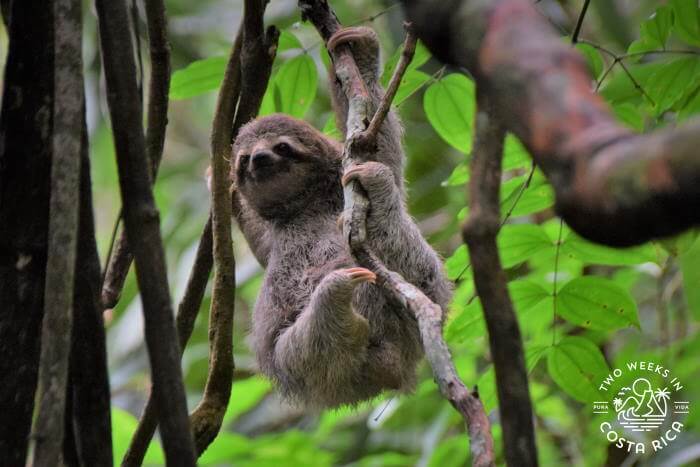
3 Reasons Why Manuel Antonio National Park Is Great for Wildlife Viewing
Here are three reasons why Manuel Antonio is one of the best places in Costa Rica to see wildlife.
A Mix of Habitats
Manuel Antonio National Park has the perfect mix of habitats for easy wildlife viewing. Positioned on the central Pacific coast, you can find primary and secondary rainforest, mangrove, wetland, and beach all within a short walk.
Within these environments is an incredible diversity of plants and animals. Over 346 plant species provide food and shelter for more than 350 species of birds and 100 species of mammals.
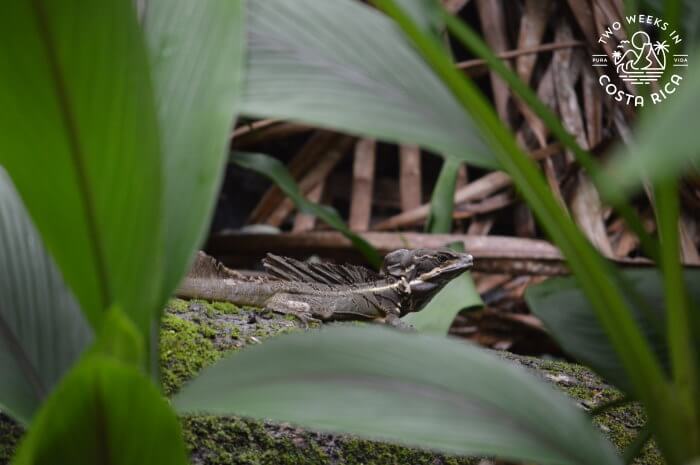
The Wildlife Isn’t Scared of People
Over generations, the wildlife inside Manuel Antonio National Park has grown accustomed to living with people around. Tourists and guides are part of their everyday life. This allows you to get some great, close-up wildlife encounters without stressing the animals.

Be aware, however, that getting too close to the animals or feeding them can be dangerous and is also bad for the wildlife.
The Park is Small & Accessible
Manuel Antonio National Park is small compared to many of Costa Rica’s other national parks.
In total, there are about 5 miles (8.3 km) of trails. If you are just looking for an easy walk, you can combine a few of the shorter trails to make a 2- or 3-mile (3-5 km) loop. If you are the type to hike all the trails, you can zig-zag through the different habitats.
For those with limited mobility, wildlife is still within reach. The first trails inside the park are along a flat boardwalk, which is handicap accessible. There are resting benches and shady spots to sit and observe the wonderful flora and fauna.
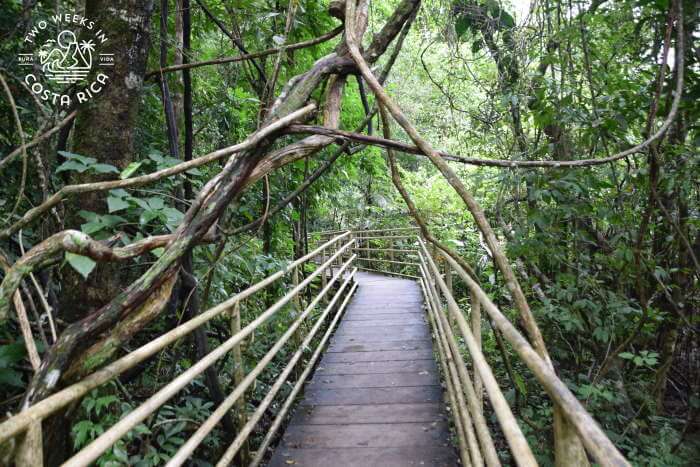
Wildlife You Can See Inside Manuel Antonio National Park
Anyone visiting Manuel Antonio National Park should expect to see at least some wildlife. How much depends on the day, conditions, and of course, some luck. Seeing a lot of wildlife on your own is possible, but a good guide can help you get even more out of your visit.
Monkeys
If you are visiting Manuel Antonio National Park, you’ll no doubt be able to see monkeys. In Costa Rica there are four types of monkeys. Inside the park, you should be able to find two or maybe even three of them.
The two most common monkey species to encounter inside Manuel Antonio National Park are howler monkeys and white-faced monkeys.
You’ll likely hear the howler monkeys before you see them. These blackish-brown monkeys spend most of their time in groups high up in the trees. They occasionally let out loud bellows to mark their territory and communicate. Once you hear their call, you can usually pinpoint their location.
Howlers are the biggest species of monkey inside the park. They can grow to be around 20 pounds (9 kilograms).
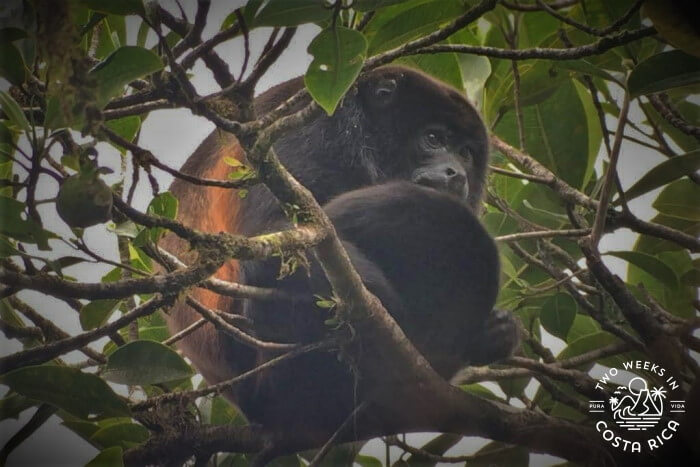
White-faced monkeys (capuchin) are easier to spot since they are more active and social. These black monkeys with white faces travel in small troops. They especially like to hang out near the beaches in the low branches but travel all around the park as well. They aren’t shy and are the ones who have a reputation for stealing food.
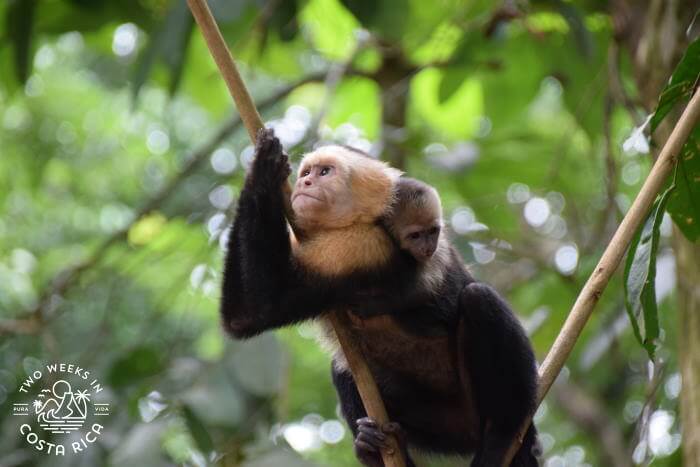
A third type of monkey called the squirrel monkey (known locally as the titi) is a bit harder to find, but their squeaky calls can give them away.
They are small, a bit bigger than a squirrel, and a rusty brown color. These super cute monkeys usually travel in large family groups in the middle-level of the canopy searching for fruits and insects to eat. They are fast and great jumpers.
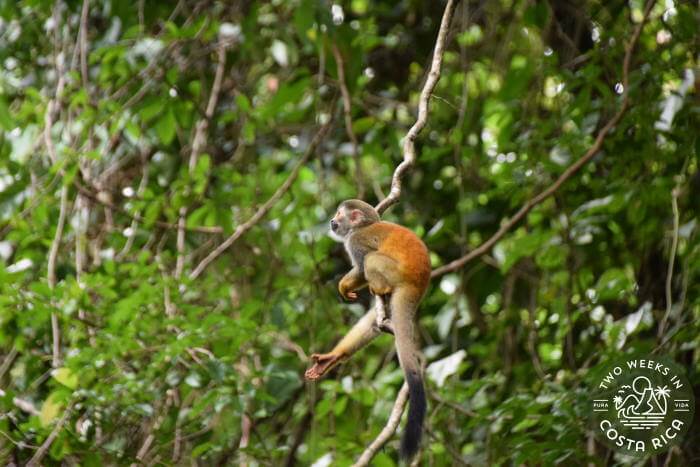
While Costa Rica’s fourth species, the spider monkey, is said to live in the park, we have never spotted one on our many visits. They are fewer in number throughout the country and may live in more remote parts, away from the main trails.
Sloths
Costa Rica has two species of sloth. The three-toed sloth and the two-toed sloth. Both live inside Manuel Antonio National Park.
In our experience, the three-toed sloth is the easiest to see. These sloths have grayish, rough fur that can sometimes appear green because of algae growth. They also have a distinctive black mask.

Three-toed sloths are more likely spotted along the inland trails in taller trees. However, they do move around into lower branches.
Two-toed sloths are less common or maybe just better at hiding from us. Two-toed sloths have whitish fur and sort of a pink face. When we do see them, they are usually in trees near the beach catching an ocean breeze.
If you are set on seeing sloths, we would highly recommend a guided tour of the park. Guides know what trees they prefer to sleep in and what leaves they like to eat.
Reptiles
Many species of reptile call Manuel Antonio National Park home as well. There are larger reptiles like crocodiles and caiman inside the park’s swampy lagoon and salty mangroves. These can be tricky to see, though, because of the dense vegetation.
More easily observed are smaller species like spiny-tailed iguanas, green iguanas, Jesus Christ lizards, basilisk lizards, whiptail lizards, and anoles. Less common species like the helmeted iguana and some species of skink also can be observed with a little luck.
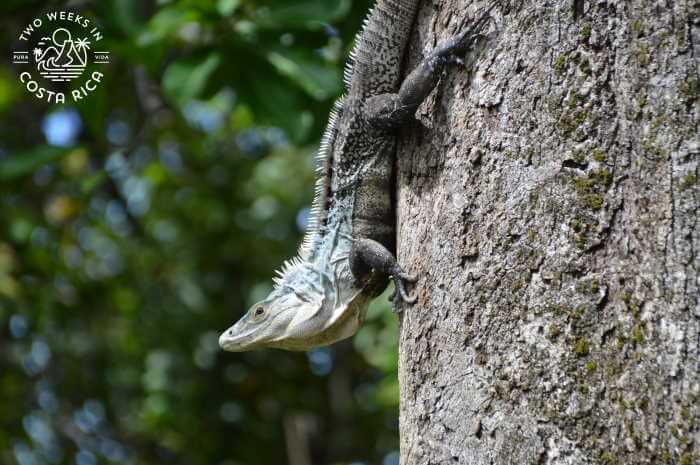
Birds
With over 350 species of birds living in or migrating through Manuel Antonio National Park, you’re sure to see at least a few exotic feathered friends.
Two types of toucan, the Yellow-throated Toucan and Fiery-billed Aracari, are common inside the park.
You also may be able to see a few trogons, antbirds, flycatchers, tanagers, motmots, and birds of prey like hawks as well.

The rocky islands just offshore, which are observed best by hiking the Cathedral Point Trail, are home to Frigate Birds, Brown Pelicans, and even the occasional Brown or Blue-footed Booby.
Other Critters
Other things you may see on your own are racoons and coati.
Coati are sort of like racoons but have longer snouts and walk with their tails in the air.
Agouti are small, brown rodent-like animals that can sometimes be seen scampering along the forest floor.
Keep a lookout for white-tailed deer too. These quietly stroll through open areas or across the trail.
Halloween crabs, with their bright orange and black color pattern, are easy to see near the mangroves and on the edges of the boardwalk. They make burrows in the mud.
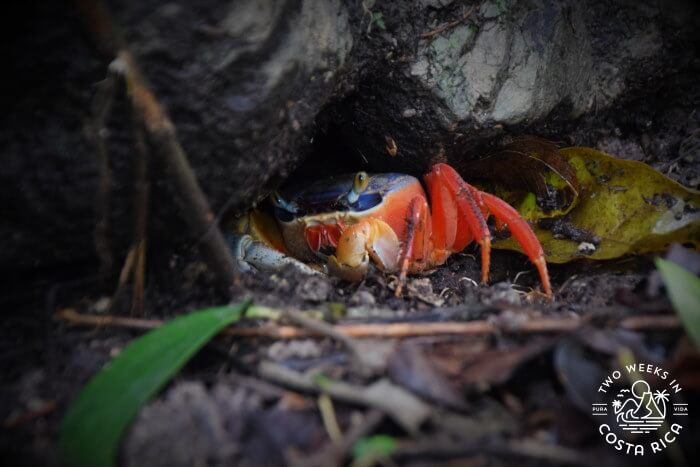
Also be on the lookout for cool insects like leaf-cutter ants walking in long lines along the trail edges.
How to See the Most
Self-Guided
Our best advice when trekking through the park on your own is to go slowly and look very carefully. Many people walk the trails too quickly, trying to see everything, and pass right by some amazing creatures.
Guided Tours
If you want to learn more about what you are seeing and find wildlife that is hidden, a good certified naturalist guide is key.
Guides are trained to know the local flora and fauna specifically found in Manuel Antonio. They know where to look for certain species.
Guides also walk the park’s trails over and over. They see patterns in the animal’s behavior and might know where a certain animal will be hanging out based on previous tours.
They also talk to one another, so if there is a special animal along the trail, they may get that location from a colleague.
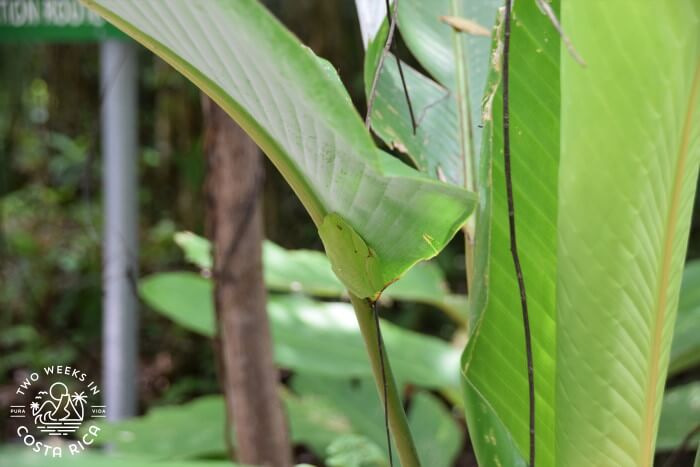
A guide’s scope also can zoom in on wildlife. Some guides will take pictures with your phone using their scope, giving you a great memento to take home.
Some cool animals we have seen with the help of a guide inside the park include a mangrove hummingbird, two-toed and three-toed sloths, three types of monkeys, toucans, parrots, a central American bull frog, Brazilian hornets, a sleeping kinkajou, and even a humpback whale and her baby breaching off the coast nearby.
Planning Your Visit
For details about visiting the park, getting tickets online, trail descriptions, and how to book a great guide, see our post, Manuel Antonio National Park: Hiking, Wildlife, and Beautiful Beaches.
Conclusion
We hope this post has gotten you excited about the wildlife you can see inside Manuel Antonio National Park. We have probably visited this park more than a dozen times now and always have a different experience. Whether it is monkeys leaping from branch to branch, a sloth yawning in the treetops, or iguanas nodding their heads on the beach, you are sure to check some of Costa Rica’s best wildlife off your list.
Have a question about visiting Manuel Antonio National Park? Post a comment below.
Need more information to help plan your visit? Check out these posts:
Manuel Antonio Trip Planning – This post is a great place to start if you are in the initial phase of your trip planning. We lay out the town, tell you what there is to do, and where to stay and eat.
Manuel Antonio Hotel Guide – Looking for a place to stay in Manuel Antonio? The options can be overwhelming. Check out this post for a narrowed down list.
Manuel Antonio Activities Guide – There is much more to do in Manuel Antonio and the surrounding area. Check out this post for adventure activities, cultural experiences, and more.

